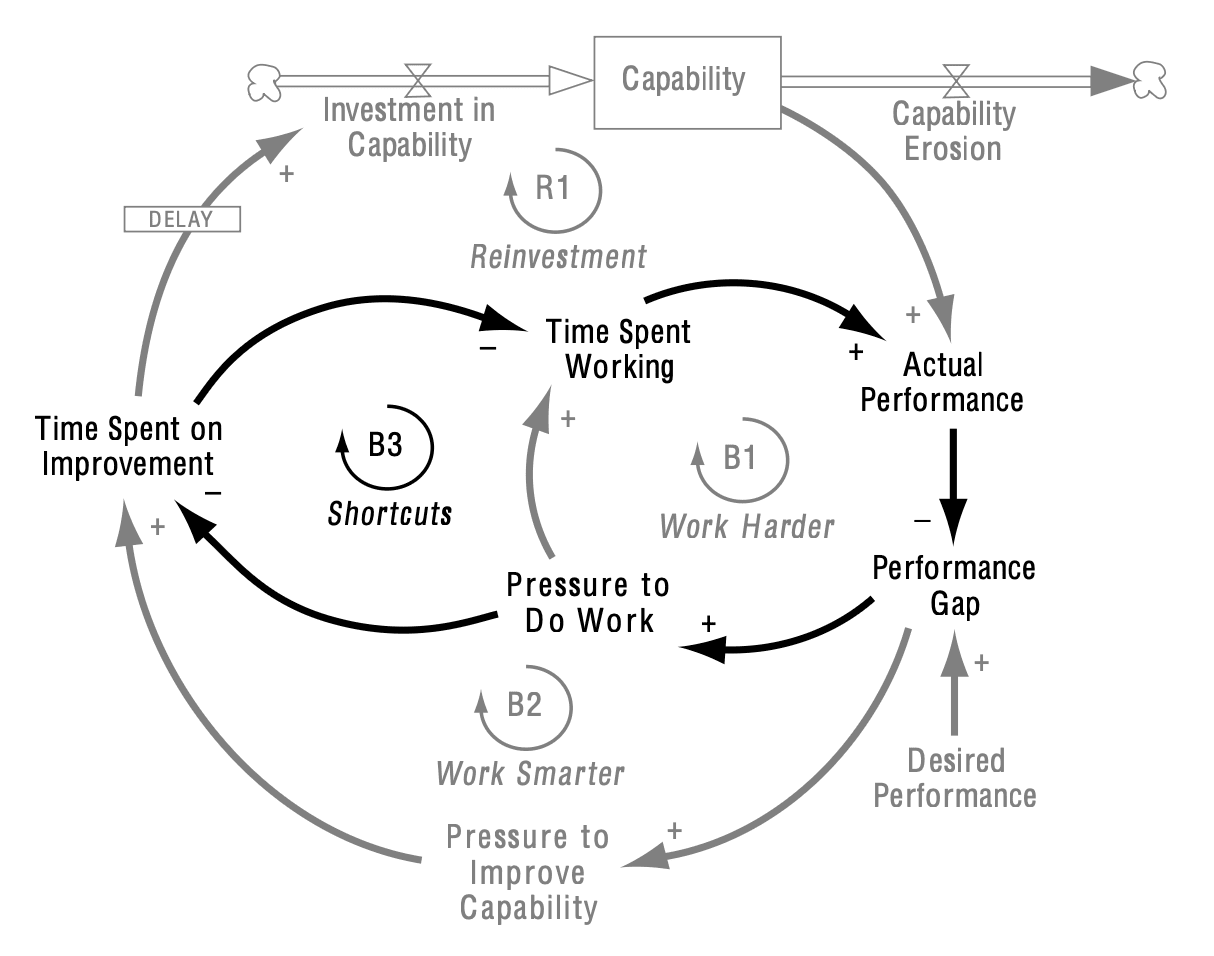
The model showing feedback loops associated with time spent on improvement (“working smarter“) and time spent working (“working harder“). Source: Nelson Repenning and John Sterman.
Cognitive Dissonance
We all know the mantras: Slow Down To Go Faster
and Work Smarter, Not Harder
.
But here’s the uncomfortable truth—most organizations preach these principles while doing the exact opposite.
The Capability Trap
I recently discovered an article referenced in Woody Zuill’s brilliant Software Teaming book: Nobody Ever Gets Credit for Fixing Problems That Never Happened: Creating and Sustaining Process Improvement by Nelson Repenning and John Sterman (2001).
As an avid Systems Thinking learner and advocate, I found the article intriguing. The piece explains why so many teams get trapped in what researchers call the Capability Trap—a vicious cycle where mounting pressure forces us to abandon improvement work in favor of “just getting things done“.
Here’s how it works:
- Pressure increases, so we skip process improvements
- Our capability to deliver effectively decreases
- We fall further behind, creating more pressure
- The cycle repeats, getting worse each time
Feedback Loops and Systems Thinking
The research reveals something critical: time spent building capability (“working smarter“) and time spent on execution (“working harder“) create competing feedback loops. When leaders see immediate results from pushing harder but delayed results from capability building, they consistently choose the short-term option.
The cost? Teams that run faster and faster while accomplishing less and less.
The solution isn’t revolutionary—it’s disciplined.
Make Time for Improving Capability
Protect time for improvement work, even when (especially when) you’re under pressure. The research backs up what we intuitively know: sustainable performance requires investing in how we work, not just how hard we work.
What capability investments is your team making this quarter?